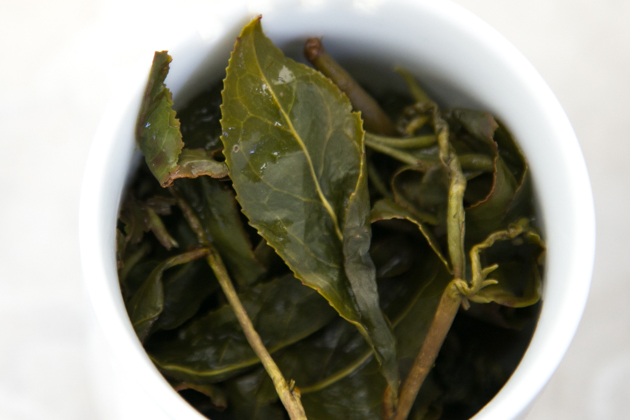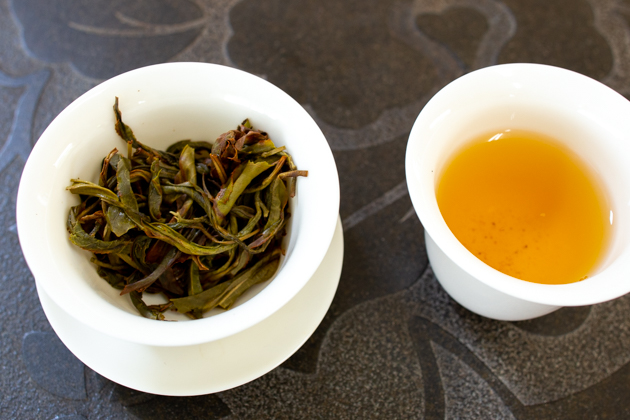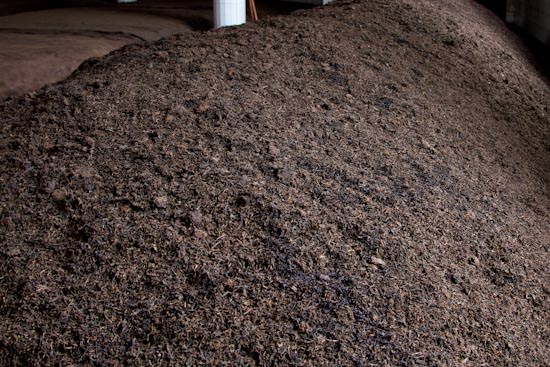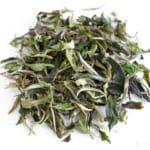- HOME >
- Tea Column
The Difference Between Fermentation in Tea and Fermented Foods
- [2024.02.12] Posted By Akira Hojo

Black tea and oolong tea are often categorized as “fermented teas,” but the extent to which they undergo fermentation raises questions about whether they truly qualify as fermented foods. In this article, I endeavour to offer a thorough exploration of the distinctions between tea and traditional fermented foods, shedding light on the nuances of their processing methods and biochemical transformations.
Common Fermented Foods
When we talk about fermented foods, we’re referring to foods where microorganisms play a pivotal role in the production process. Representative examples of fermented foods include alcoholic beverages, miso, soy sauce, cheese, natto, yogurt, and more.
During the production of fermented foods, microorganisms consume food components, multiply, and simultaneously transform these components into distinct organic compounds through enzymes derived from microorganisms. Essentially, the term “fermentation” in the context of fermented foods signifies the enzymatic conversion of the food’s components facilitated by enzymes derived from microorganisms.
The Fermentation Process in Tea
Tea is often broadly categorized as a fermented food, but when it comes to teas like black tea and oolong tea, there is no involvement of microorganisms in the “fermentation” process. This sets the fermentation process of tea apart from that of other fermented foods.
In the case of tea fermentation, the polyphenols present in the tea leaves undergo oxidation due to the naturally occurring enzymes, known as oxidative enzymes, in the tea leaves. Initially, these enzymes and polyphenols are stored separately within the cells. However, through the process of rolling or kneading, the cells are damaged, allowing the enzymes and polyphenols to mix and initiate a reaction.
In tea, fermentation primarily involves enzymatic oxidation reactions facilitated by the plant’s own enzymes and components, such as polyphenols. This distinctive process distinguishes tea fermentation from the fermentation processes observed in other fermented foods.


In summary, the fermentation process observed in typical fermented foods involves enzymatic reactions facilitated by microorganisms. However, in the case of tea, fermentation entails a transformation of components through the inherent enzymatic reactions present within the tea itself. While the Chinese character “酵” in fermentation signifies enzymes, and tea indeed utilizes enzymes in its processing, it deviates significantly from what is conventionally considered fermented foods due to the absence of microbial involvement.
Other Foods Utilizing Enzymatic Reactions Similar to Tea
Numerous other types of enzymatic reactions, akin to those observed in tea, can be found in various foods. For instance, the formation of pungent components and the generation of aroma in garlic and onions also follow a similar mechanism. The characteristic smell of plants in the Allium family, such as onions, arises when the cells are disrupted through cutting, facilitating the mixing of enzymes and substrates.
Grating wasabi triggers a enzymatic reaction that results in the formation of spiciness, akin to the fermentation process observed in black tea. Within the cells of wasabi, an enzyme called myrosinase coexists with a component called sinigrin glucoside. When grated, the cells rupture, allowing these two substances to combine and produce the pungent compound allyl isothiocyanate. Interestingly, wasabi itself has a sweet and mildly bitter taste. Similarly, the transformation of green peppercorns into black pepper shares a related process, as does the browning of apples or bananas when cut, all involving enzymatic reactions.
The enzymatic reactions observed in these foods mirror those found in the fermentation process of tea. However, neither plants from the Allium family, such as onions, nor wasabi are categorized as fermented foods. Hence, referring to tea as a fermented food is rather exceptional within the scope of food classification.
Exceptional Tea Made Through Microbial Fermentation
Certain teas, such as Pu-erh and some dark teas, undergo fermentation involving microorganisms, similar to typical fermented foods.


For instance, Pu-erh ripe tea is produced through the fermentation of microorganisms such as bacteria, yeast, and mold. Unlike the traditional oxidation process of tea leaves, the raw material, Pu-erh raw tea, undergoes a heating process during production, which deactivates the enzymes. Consequently, the distinct flavor of ripe tea is primarily created by microorganisms and their enzymes, rather than those derived from the tea leaves themselves.
Related Articles
How to get the latest update on HOJO?
1. Follow Twitter, 2. Click "Like" on Facebook, and 3. Subscribe in newsletter. You can have the latest tea news from HOJO.
 Subscribe the Newsletter to enjoy the privileges
Subscribe the Newsletter to enjoy the privileges- You may receive a free sample upon purchase, or you may have the priority to purchase special products. So please remember to subscribe our newsletter as well as the social network.
- Fresh 2025 Yunnan White Tea – Select Your Favourite Lot Before Blending
- Freshly crafted in Yunnan and just arrived in KL, our new 2025 white tea is now available at our Gardens Mall …
- 2024 Dong Shan Raw Pu-erh Tea – Crafted with the Producer for Desired Quality
- We have released the 2024 cake of Dong Shan Raw Pu-erh Tea. Earlier, we offered the loose-leaf version from th …
NEW ARTICLES
 Fresh 2025 Yunnan White Tea – Select Your Favourite Lot Before Blending
Fresh 2025 Yunnan White Tea – Select Your Favourite Lot Before Blending- Freshly crafted in Yunnan and just arrived in KL, our new 2025 white tea is now available at our Gardens Mall …
 2024 Dong Shan Raw Pu-erh Tea – Crafted with the Producer for Desired Quality
2024 Dong Shan Raw Pu-erh Tea – Crafted with the Producer for Desired Quality- We have released the 2024 cake of Dong Shan Raw Pu-erh Tea. Earlier, we offered the loose-leaf version from th …
 Development of Firewood Roasted Hojicha Using Naturally Grown Tea from Yunnan
Development of Firewood Roasted Hojicha Using Naturally Grown Tea from Yunnan- We are currently staying in Yunnan Province for tea production. As the season nears its end, tea trees with pa …
 Exploring the Food Culture of Yunnan: Where Minority and Sichuan Cuisines Meet
Exploring the Food Culture of Yunnan: Where Minority and Sichuan Cuisines Meet- We are currently staying long-term in Yunnan Province for spring tea production. On rainy days or when there i …
 New Arrival of Akitsu Mumyoi and Nosaka Rough Clay Teapot
New Arrival of Akitsu Mumyoi and Nosaka Rough Clay Teapot- A wide selection of teaware by Watanabe Tozo, a Sado-based artist of Mumyoi-yaki, has just arrived. This time, …
 Managing Yunnan White Tea — Insights from the Field
Managing Yunnan White Tea — Insights from the Field- Since March 25, we have been in Yunnan Province, fully engaged in the production of white tea. In this column, …
 Mang Fei Ripe Pu-erh Tea 2023 – Small-Batch Production from a Renowned Region
Mang Fei Ripe Pu-erh Tea 2023 – Small-Batch Production from a Renowned Region- Mang Fei Ripe Pu-erh Tea 2023 is now available. This is one of the highest-quality ripe pu-erh teas among our …
 Yunnan Tea Trends 2025: Insights from the Fields
Yunnan Tea Trends 2025: Insights from the Fields- Since March 25, we have been in Yunnan Province. We will stay here until May to conduct tea production, packin …
 Why Do Some Teas Taste Astringent? Exploring the Causes and Mechanisms of Astringency
Why Do Some Teas Taste Astringent? Exploring the Causes and Mechanisms of Astringency- Tea can range from having no noticeable astringency to possessing a very strong one. What causes this astringe …
 The Impact of Heat Sources on Tea Flavor
The Impact of Heat Sources on Tea Flavor- It is widely recognized that the material of a kettle plays an important role in shaping the taste of water fo …
Category
- New Arrival at HOJO Online Shop
- Featured Articles
- Newsletter
- Types of Tea
- Origin of Tea
- Teapot and Tea Equipment
-
Tea Column
- How to enjoy tea
- Tea Processing
- How to choose quality tea
- Tea constituents and functional effect
- Safety of Tea
- Foods
- Tea Business Operation
- Hobby and Outdoor Activity
- Ranking of Tea
- Video
- FAQ
- Media Release
Profile

- AKIRA HOJO
- I invite you to experience my tea selections.I was born in Nagano, Japan. In university, I studied agricultural chemistry, and I have the master degree in food science. I worked in Japanese food industry for 10 years. I involved in R&D, QC and QA. As a factory manager, I implemented ISO9000 series and managed the factory.
- The Art of Tea Magazine
- We posted the article on “The Art of Tea Magazine No.9, the magazine is published in Taiwan. We featured …
- New Straits Times
- The Malaysian National Newspaper, New Straits Times featured HOJO Tea on 17-Oct-2007.
Shop Info

Address:Lot No. T-215, 3rd Floor, The Gardens Mall, Mid Valley City, Lingkaran Syed Putra, 59200 Kuala Lumpur
Tel: +603-2287-4537
Business Hour: 10am to 10pm














